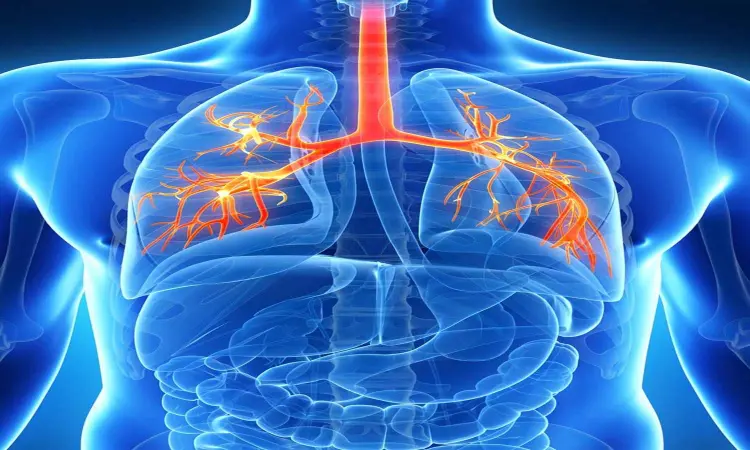- Home
- Medical news & Guidelines
- Anesthesiology
- Cardiology and CTVS
- Critical Care
- Dentistry
- Dermatology
- Diabetes and Endocrinology
- ENT
- Gastroenterology
- Medicine
- Nephrology
- Neurology
- Obstretics-Gynaecology
- Oncology
- Ophthalmology
- Orthopaedics
- Pediatrics-Neonatology
- Psychiatry
- Pulmonology
- Radiology
- Surgery
- Urology
- Laboratory Medicine
- Diet
- Nursing
- Paramedical
- Physiotherapy
- Health news
- Fact Check
- Bone Health Fact Check
- Brain Health Fact Check
- Cancer Related Fact Check
- Child Care Fact Check
- Dental and oral health fact check
- Diabetes and metabolic health fact check
- Diet and Nutrition Fact Check
- Eye and ENT Care Fact Check
- Fitness fact check
- Gut health fact check
- Heart health fact check
- Kidney health fact check
- Medical education fact check
- Men's health fact check
- Respiratory fact check
- Skin and hair care fact check
- Vaccine and Immunization fact check
- Women's health fact check
- AYUSH
- State News
- Andaman and Nicobar Islands
- Andhra Pradesh
- Arunachal Pradesh
- Assam
- Bihar
- Chandigarh
- Chattisgarh
- Dadra and Nagar Haveli
- Daman and Diu
- Delhi
- Goa
- Gujarat
- Haryana
- Himachal Pradesh
- Jammu & Kashmir
- Jharkhand
- Karnataka
- Kerala
- Ladakh
- Lakshadweep
- Madhya Pradesh
- Maharashtra
- Manipur
- Meghalaya
- Mizoram
- Nagaland
- Odisha
- Puducherry
- Punjab
- Rajasthan
- Sikkim
- Tamil Nadu
- Telangana
- Tripura
- Uttar Pradesh
- Uttrakhand
- West Bengal
- Medical Education
- Industry
Bronchiectasis may delay fundamental movement skill and growth in children: Study

Bronchiectasis is a major contributor to respiratory morbidity and healthcare utilization in children. Children with bronchiectasis often exhibit low levels of physical activity (PA) and poor fundamental movement skills (FMS). These two factors may be a contributing element in the growth and development of a child.
However, there are no data on fundamental movement skills. Those children who meet their age equivalency for fundamental movement skills proficiency participate in significantly more daily moderate-to-vigorous physical activity than children who do not meet their age-equivalency, suggested a recent study conducted at the School of Human Movement and Nutrition Sciences, The University of Queensland, Brisbane, Australia.
The study is published in the BMC Pulmonary Medicine.
The current study assessed fundamental movement skills proficiency in children with bronchiectasis and examined associations with objectively measured physical activity.
Forty-six children with bronchiectasis were recruited for the study. Physical activity was measured using the ActiGraph GT3X + accelerometer. Raw accelerometer data were processed into daily time spent in sedentary activities, light-intensity activities and games, walking, running, and moderate-to-vigorous activities and games using a random forest (RF) physical activity classification algorithm specifically developed for children.
Daily moderate-vigorous physical activity was calculated by summing time spent in walking, running, and moderate-to-vigorous activities and games.
The following findings were highlighted-
a. Fewer than 5% of children demonstrated mastery in the run, gallop, hop, and leap; while fewer than 10% demonstrated mastery for the two-handed strike, overarm throw, and underarm throw.
b. Only eight of the 46 children (17.4%) achieved their age equivalency for locomotor skills, while just four (8.7%) achieved their age equivalency for object control skills.
c. Children achieving their age equivalency for fundamental movement skills had significantly higher levels of moderate-vigorous physical activity than children not achieving their age equivalency.
d. No significant differences were observed for sedentary activities, light-intensity activities and games, walking, and running.
As a result, it was concluded that children with bronchiectasis exhibit significant delays in their fundamental movement skills development.
https://doi.org/10.1186/s12890-021-01637-w
Dr. Nandita Mohan is a practicing pediatric dentist with more than 5 years of clinical work experience. Along with this, she is equally interested in keeping herself up to date about the latest developments in the field of medicine and dentistry which is the driving force for her to be in association with Medical Dialogues. She also has her name attached with many publications; both national and international. She has pursued her BDS from Rajiv Gandhi University of Health Sciences, Bangalore and later went to enter her dream specialty (MDS) in the Department of Pedodontics and Preventive Dentistry from Pt. B.D. Sharma University of Health Sciences. Through all the years of experience, her core interest in learning something new has never stopped. She can be contacted at editorial@medicaldialogues.in. Contact no. 011-43720751
Dr Kamal Kant Kohli-MBBS, DTCD- a chest specialist with more than 30 years of practice and a flair for writing clinical articles, Dr Kamal Kant Kohli joined Medical Dialogues as a Chief Editor of Medical News. Besides writing articles, as an editor, he proofreads and verifies all the medical content published on Medical Dialogues including those coming from journals, studies,medical conferences,guidelines etc. Email: drkohli@medicaldialogues.in. Contact no. 011-43720751


